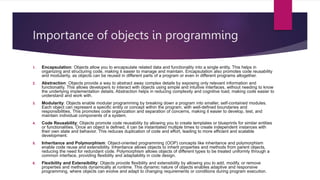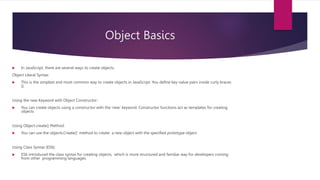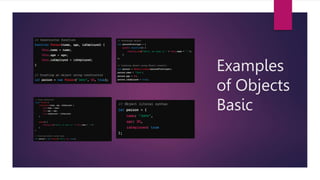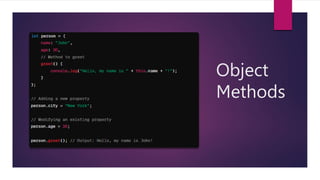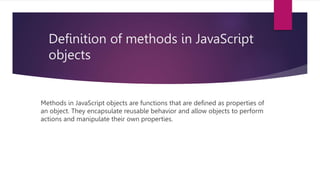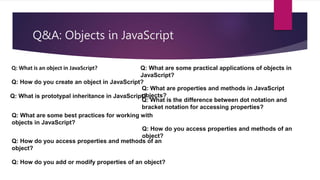The document provides an in-depth exploration of objects in JavaScript, which are complex data types used for storing collections of related data and functionality. It highlights the importance of objects in programming in terms of encapsulation, abstraction, modularity, reusability, inheritance, and flexibility, while detailing various ways to create and manage objects, as well as practical applications in web development. Additionally, it outlines best practices for working with objects to ensure maintainable and efficient code.




